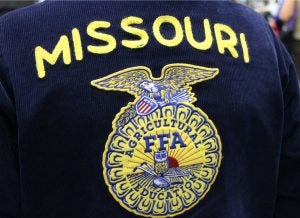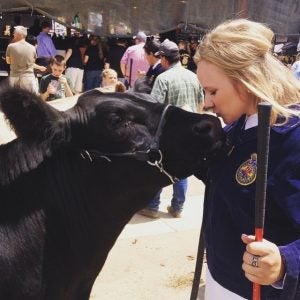With FFA having been around for a century, it is an organization that has fundamentally remained steady and supportive despite the changing world. The agriculture industry as a whole has seen explosive growth and changes in the past 100 years, but one thing that has not changed is the strength of FFA.
Undoubtedly, FFA has provided professional development for many, and it displays an unconditional love of agriculture. Back in 1930, about a quarter of the U.S. population was made up of farmers, while now it is less than 2 percent. Despite this shocking statistic, more and more students sign up each day to become a part of the National FFA Organization (more than 760,000 are members). The demographic of FFA members has changed drastically, and FFA has tailored its ways to still be able to cultivate professionals in the field.
Mary Coolbaugh, an agriculture teacher and FFA advisor from Marcus Whitman Central School in New York, offers an inside perspective to this.
Coolbaugh says that while in school studying early childhood education, she found that many of the lessons she was learning could easily be related back to agriculture. This realization made her “get on the other side of campus” to start taking some agriculture classes.
“Over the years our students have become further and further removed from the farm,” she says. “However, teaching our students where their food comes from is just as important today as it was 10 or 20 years ago.”
Coolbaugh says the leadership aspect of FFA draws many students in today, and often students are motivated to follow in the footsteps of their parents and grandparents — and earn their jacket.

Maybe the biggest philosophical shift is that when FFA started, youth joined the program to be in a group of farmers, and they were happy to learn leadership skills along the way. Now youth join FFA specifically to learn leadership skills, and they are happy to learn about agriculture along the way.
New York state FFA director Derek Hill explains just how the FFA organization has paved the way for all students to grow as an FFA member.
Hill says that the students now have much more diverse backgrounds. Hill also notes that there are more female members now than male members — in one example of this, for the first time in New York state history, all of the state officer and district president positions are held by women.
Hill says that New York FFA is “intentionally reaching out to schools and communities in urban centers to try and expand our reach and convince them of the importance for all students to know where their food comes from and the opportunities available to them.”
Hill has also seen how FFA has made adjustments to its curriculum to “better reflect the career areas within agriculture that students are interested in and the industry needs.” FFA is not an organization just for farmers; it is an organization to help young people learn where their food comes from and how to work with the land.

By targeting urban areas, FFA is purposely reaching a previously untouched demographic — those who are the most removed from our food system are the ones who will benefit most from what FFA has to offer.
Hill suggests that FFA is not an exclusive club at all. He says that everyone who becomes a member feels that FFA is a second family.
As for the future of FFA, New York alone has added about 40 new chapters in the past five years, and will continue reaching out to new students who need the education and experience of FFA.
Elizabeth Maslyn is a Cornell University student pursuing a career in the dairy industry. Her passion for agriculture has driven her desire to learn more, and let the voices of our farmers be heard.



